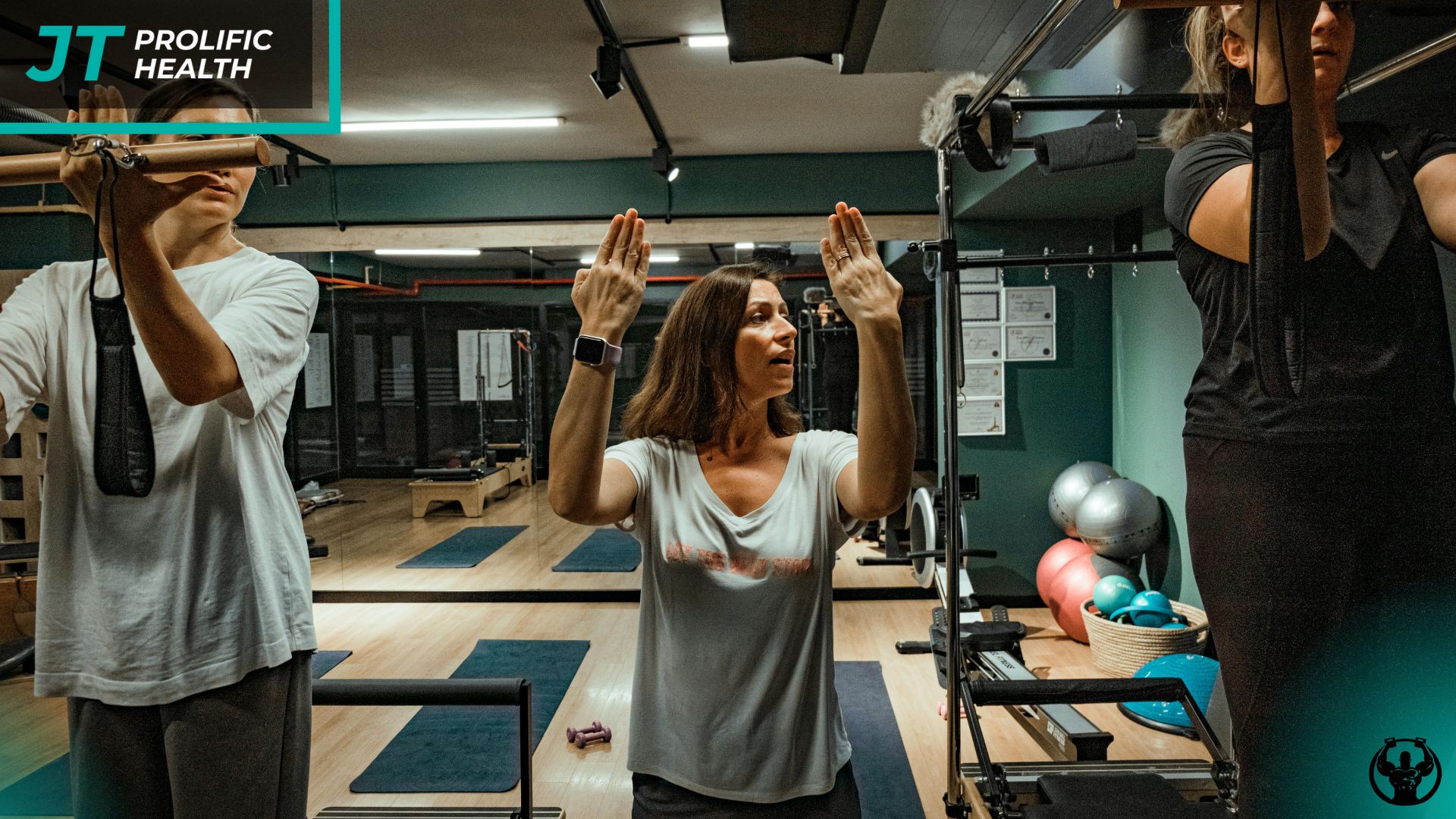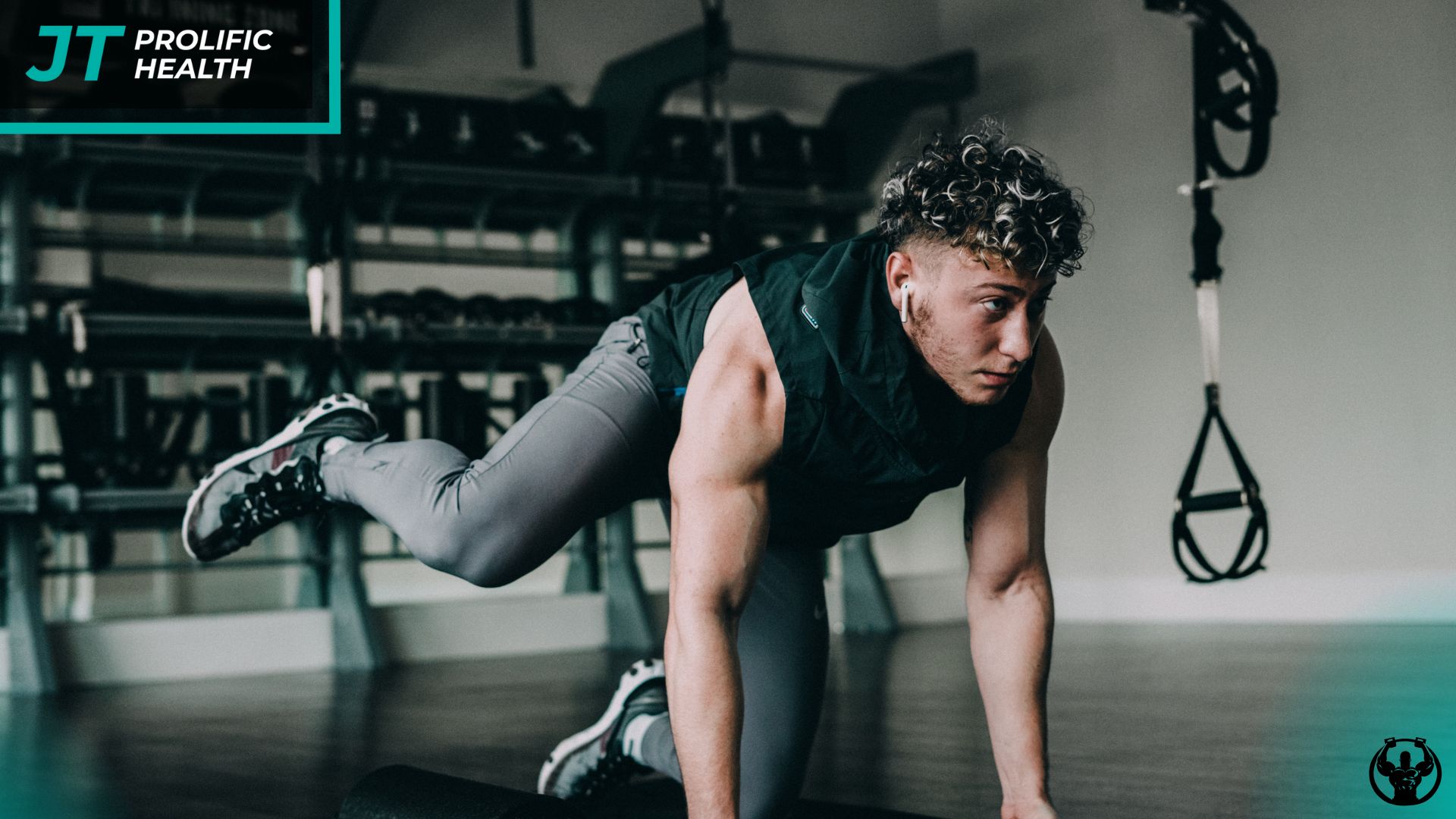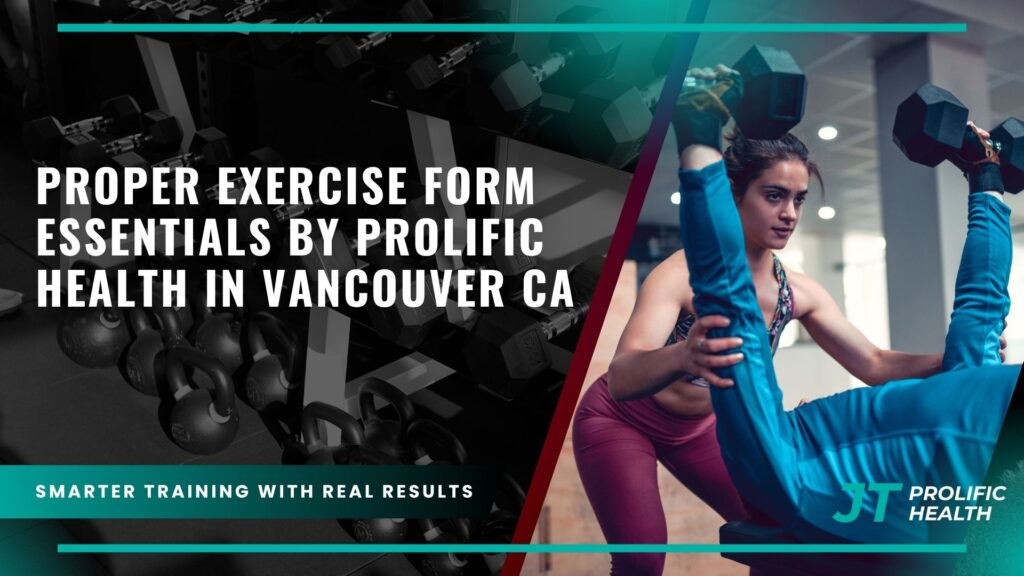Did you know 72% of gym-related injuries in Canada stem from incorrect movement patterns? This startling statistic highlights why quality technique isn’t just about performance—it’s about safety. At Prolific Health, with clinics in Richmond and Vancouver, we’ve seen firsthand how mastering movement fundamentals transforms fitness journeys.
Whether you’re lifting weights or doing bodyweight drills, how you execute movements determines results. Poor alignment or rushed repetitions often lead to strains, setbacks, or chronic issues. Our team prioritizes biomechanical precision to help you build strength sustainably through private training.
Many struggle with technique because fitness trends prioritize speed over control. We counter this with science-backed strategies that emphasize posture, joint positioning, and breathing. It’s not about lifting heavier—it’s about moving smarter to unlock long-term progress.
Key Takeaways
- Correct movement patterns reduce injury risk by up to 60% during strength training
- Technique quality directly impacts muscle engagement and workout efficiency
- Over 80% of beginners develop habits requiring correction within their first 3 months
- Our clinics use injury-prevention methods refined through 15+ years of local practice
- Prioritizing form over weight increases strength gains by 34% over 12 months
Introduction to Exercise Technique and Safety
What separates productive workouts from potentially harmful ones? The answer lies in how your body aligns during every rep. At Prolific Health, we treat movement quality as non-negotiable—your joints and muscles deserve precision, not guesswork.


Our Philosophy at Prolific Health
We start by building awareness. Before adding weight or complexity, our Richmond and Vancouver clients learn to recognize optimal joint positioning. This foundation helps people develop strength without straining vulnerable areas like shoulders or knees. Our approach combines:
- Biomechanical assessments to identify individual needs
- Step-by-step technique breakdowns
- Real-time feedback during movements
Why Accurate Form Prevents Injury
Your body functions best when muscles and joints share workloads evenly. Slouching during lifts or rotating hips improperly shifts stress to weaker areas. Over time, this imbalance increases injury risks—from sudden pulls to gradual cartilage wear.
We prioritize controlled motions because rushed repetitions cheat your progress. Slowing down lets you engage target muscles fully while protecting connective tissues. This method reduces strain and helps you build lasting strength safely.
Fundamentals of Proper Exercise Form
Building a strong foundation starts with three pillars: alignment, rhythm, and awareness. At our Vancouver and Richmond clinics, we help clients develop these essentials through personalized coaching and biomechanical analysis.
Posture, Joint Movements and Breathing Techniques
Your spine acts as your body’s central support column. Keeping it neutral with shoulders relaxed and pelvis stable distributes force evenly during lifts. This alignment protects discs while allowing full engagement of target muscles.
Breathing patterns directly influence performance. Exhaling during exertion maintains intra-abdominal pressure, stabilizing your core. Synchronized breaths keep oxygen flowing to working tissues, delaying fatigue.


The Importance of Tempo and Foot Placement
Speed matters more than most realize. A 3-second lowering phase builds eccentric strength while reducing joint strain. Controlled tempos prevent momentum from hijacking your gains.
Foot positioning dictates which muscles drive movements. Wider stances emphasize glutes during squats, while staggered feet activate quads differently. We teach clients to adjust their base for specific training goals in group strength sessions.
These fundamentals transform how your body interacts with resistance. When combined strategically, they create safer, more effective workouts that adapt as your abilities grow.
Mastering Lower-Body Movements with Correct Techniques
Your knees bear the brunt of daily movement—stairs, walks, and workouts. At Prolific Health’s Richmond and Vancouver clinics, we help clients refine lower-body mechanics to safeguard joint health while building functional strength. Let’s break down techniques that keep your legs powerful and pain-free.


Squat and Lunge Mechanics for Knee Health
Start squats by positioning your feet shoulder-width apart. As you lower, aim for a chair-sitting depth while keeping knees aligned over mid-toes. This prevents inward collapsing (valgus) or outward splaying (varus)—common issues straining ligaments.
In lunges, maintain 90-degree angles at both knees. If your front knee drifts past toes, shorten your step. Drive upward through your heels to activate glutes and hips instead of overloading knee tendons.
Stability Through Strategic Foot Placement
Where you place your feet determines muscle engagement. Wider stances during squats target inner thighs, while narrower positions emphasize quads. Keep weight distributed evenly across soles—or slightly toward heels—to avoid forward lean.
Ground contact matters. Imagine spreading the floor apart with your feet during lifts. This activates hip stabilizers, creating a solid base that protects knees during dynamic movements like jumps or lateral steps.
Optimising Upper-Body Exercises for Strength and Balance
Upper-body workouts challenge your pushing and pulling power, but poor alignment turns strength sessions into injury risks. At Prolific Health’s Vancouver and Richmond clinics, we focus on mechanics that protect your shoulders while maximising muscle engagement. Let’s explore techniques to strengthen your chest and back without compromising joint health.
Effective Lat Pulldown and Chest Press Methods
For lat pulldowns, grip the bar slightly wider than your shoulders. Engage your core and lean back 15 degrees as you pull the bar toward your upper chest. Drive elbows downward to activate lats fully while keeping your neck neutral.
During chest presses, maintain elbows at a 45-degree angle from your torso. This position reduces shoulder strain while directing effort to your chest and triceps. Keep shoulder blades pressed against the bench to stabilise joints throughout the movement.
Averting Common Shoulder and Neck Errors
Avoid letting elbows flare outward during bench presses—this shifts stress to fragile shoulder tendons. Instead, tuck elbows slightly to engage chest muscles safely. Keep your chin slightly tucked to prevent neck hyperextension, a common mistake when lifting heavier weights.
Scapular stability matters in every upper-body movement. Imagine squeezing a pencil between your shoulder blades during rows or presses. This simple cue maintains joint alignment and prevents compensatory movements that lead to overuse injuries.
Incorporating Industry Insights and Local Guidelines
In Vancouver and Richmond, community health insights transform training approaches. At Prolific Health, we combine Health Canada’s activity guidelines with BC’s safety standards to create workout plans that work for our neighborhoods. This fusion ensures your efforts align with both scientific research and what real people need in local gyms.
Insights from Local Government and Fitness Experts
Our team regularly updates methods using provincial health recommendations. For example, we adapt warm-up protocols based on SportMedBC’s injury prevention strategies. This keeps training safe while addressing common mobility issues seen in desk workers across Metro Vancouver.
Collaboration with kinesiologists ensures exercises match current biomechanics research. We focus on movements that build functional strength for daily tasks—like lifting groceries or climbing local hills. This practical approach reduces injury risks while boosting real-world performance through hybrid training.
Practical Training Tips from Our Clinics
Start by mastering bodyweight drills before adding resistance. Record yourself doing squats or push-ups from front and side angles. Video reviews help spot hidden issues like uneven hips or shaky balance.
Increase weights only when you maintain control through full motion ranges. Our Richmond clients often progress faster using this method—one study showed 28% fewer strains compared to traditional programs. Remember, strength grows when technique stays sharp.
- Sync workouts with Health Canada’s weekly activity targets
- Use video feedback to refine lifting patterns
- Add resistance in 5% increments after demonstrating stability
Conclusion
Your workouts transform when attention to detail meets consistent practice. The guidance we’ve shared helps turn gym time into safer, smarter sessions where every lift protects your body while building strength. At Prolific Health, we’re committed to helping Richmond and Vancouver residents move with confidence.
Mastering technique does more than reduce injury risk—it amplifies results. Whether adjusting foot angles during squats or stabilizing shoulders during presses, precise movements engage target muscles effectively. This approach lets you handle heavier weights safely over time.
Remember: Progress thrives on patience. Record your lifts, check alignment, and prioritize joint-friendly positions. Small tweaks—like keeping knees over toes or maintaining neutral spines—make lasting differences in how your body responds to training.
Ready to refine your approach? Our clinics offer personalized assessments to strengthen weak points and enhance performance. Contact us today—your journey toward powerful, pain-free movement starts here.




